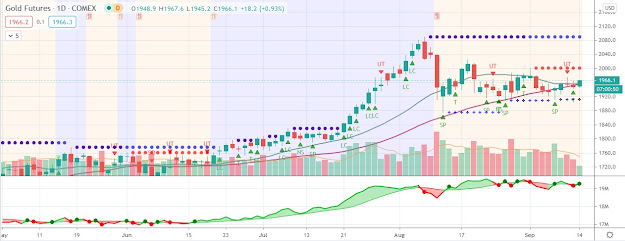The rally in the price of gold and broader markets was fueled by a sell-off in the U.S. dollar
 The gold price, at $1,684 per ounce, hovered near unchanged Tuesday morning. After trading as high as $1,695 overnight, the price of gold retreated after German Chancellor Angela Merkel’s chief spokesman, Steffen Seibert, warned that a quick ending to the sovereign debt crisis in Europe was not forthcoming. S&P 500 stock futures turned down on the news while cyclically-sensitive commodities, such as oil and copper, pared their gains.
The gold price, at $1,684 per ounce, hovered near unchanged Tuesday morning. After trading as high as $1,695 overnight, the price of gold retreated after German Chancellor Angela Merkel’s chief spokesman, Steffen Seibert, warned that a quick ending to the sovereign debt crisis in Europe was not forthcoming. S&P 500 stock futures turned down on the news while cyclically-sensitive commodities, such as oil and copper, pared their gains.The rally in the price of gold and broader markets was fueled by a sell-off in the U.S. dollar, particularly against the euro. The euro climbed from near 1.36 to 1.3870 against the dollar last week amid reports that European policymakers are considering an expansion of bailout funds to help recapitalize the euro zone banking system. Speculation that the International Monetary Fund (IMF) may play a larger role in the efforts also arose in recent days. Any increase in the level of financial assistance would inherently involve additional money printing, and thus provide a more favorable environment for the yellow metal.
Despite its advance, the spot price of gold remains 12.6% below its $1,921 all-time high print, recorded on September 6, 2011. Commenting on the yellow metal’s correction over the past month, Tony Hall of Duet Commodities Fund stated in a recent Bloomberg interview that “the decline is more of a healthy retracement” than a change in the long-term trend. ”I do think the trend is still in place,” Hall asserted, “and in the next three to six months we’re going to reach the $2,000 mark.”



Comments
Post a Comment